Entry Database : PDB / ID : 6rvaTitle STRUCTURE OF [ASP58]-IGF-I ANALOGUE Insulin-like growth factor I Keywords / Function / homology Function Domain/homology Component
/ / / / / / / / / / / / / / / / / / / / / / / / / / / / / / / / / / / / / / / / / / / / / / / / / / / / / / / / / / / / / / / / / / / / / / / / / / / / / / / / / / / / / / / / / / / / / / / / / / / / / / / / / / / / / / / / / / / / / / / / / / / / / / / / / Biological species Homo sapiens (human)Method / Authors Jiracek, J. / Zakova, L. / Socha, O. Funding support Organization Grant number Country Medical Research Council (United Kingdom) MR/K000179/1 Medical Research Council (United Kingdom) MR/R009066/1 European Regional Development Fund CZ.02.1.01/0.0/0.0/16_019/0000729
Journal : J.Biol.Chem. / Year : 2019Title : Mutations at hypothetical binding site 2 in insulin and insulin-like growth factors 1 and 2 result in receptor- and hormone-specific responses.Authors: Machackova, K. / Mlcochova, K. / Potalitsyn, P. / Hankova, K. / Socha, O. / Budesinsky, M. / Muzdalo, A. / Lepsik, M. / Cernekova, M. / Radosavljevic, J. / Fabry, M. / Mitrova, K. / ... Authors : Machackova, K. / Mlcochova, K. / Potalitsyn, P. / Hankova, K. / Socha, O. / Budesinsky, M. / Muzdalo, A. / Lepsik, M. / Cernekova, M. / Radosavljevic, J. / Fabry, M. / Mitrova, K. / Chrudinova, M. / Lin, J. / Yurenko, Y. / Hobza, P. / Selicharova, I. / Zakova, L. / Jiracek, J. History Deposition May 31, 2019 Deposition site / Processing site Revision 1.0 Oct 2, 2019 Provider / Type Revision 1.1 Oct 9, 2019 Group / Database references / Category / citation_authorItem _citation.country / _citation.journal_abbrev ... _citation.country / _citation.journal_abbrev / _citation.journal_id_ASTM / _citation.journal_id_CSD / _citation.journal_id_ISSN / _citation.pdbx_database_id_DOI / _citation.pdbx_database_id_PubMed / _citation.title / _citation.year Revision 1.2 Nov 27, 2019 Group / Category / citation_authorItem _citation.journal_volume / _citation.page_first ... _citation.journal_volume / _citation.page_first / _citation.page_last / _citation_author.name Revision 1.3 Jun 14, 2023 Group / Other / Category / pdbx_database_statusItem / _database_2.pdbx_database_accession / _pdbx_database_status.status_code_nmr_dataRevision 1.4 Nov 6, 2024 Group / Database references / Structure summaryCategory chem_comp_atom / chem_comp_bond ... chem_comp_atom / chem_comp_bond / database_2 / pdbx_entry_details / pdbx_modification_feature Item
Show all Show less
 Open data
Open data Basic information
Basic information Components
Components Keywords
Keywords Function and homology information
Function and homology information Homo sapiens (human)
Homo sapiens (human) Authors
Authors United Kingdom,
United Kingdom,  Czech Republic, 3items
Czech Republic, 3items  Citation
Citation Journal: J.Biol.Chem. / Year: 2019
Journal: J.Biol.Chem. / Year: 2019 Structure visualization
Structure visualization Molmil
Molmil Jmol/JSmol
Jmol/JSmol Downloads & links
Downloads & links Download
Download 6rva.cif.gz
6rva.cif.gz PDBx/mmCIF format
PDBx/mmCIF format pdb6rva.ent.gz
pdb6rva.ent.gz PDB format
PDB format 6rva.json.gz
6rva.json.gz PDBx/mmJSON format
PDBx/mmJSON format Other downloads
Other downloads 6rva_validation.pdf.gz
6rva_validation.pdf.gz wwPDB validaton report
wwPDB validaton report 6rva_full_validation.pdf.gz
6rva_full_validation.pdf.gz 6rva_validation.xml.gz
6rva_validation.xml.gz 6rva_validation.cif.gz
6rva_validation.cif.gz https://data.pdbj.org/pub/pdb/validation_reports/rv/6rva
https://data.pdbj.org/pub/pdb/validation_reports/rv/6rva ftp://data.pdbj.org/pub/pdb/validation_reports/rv/6rva
ftp://data.pdbj.org/pub/pdb/validation_reports/rv/6rva Links
Links Assembly
Assembly
 Components
Components Homo sapiens (human) / Gene: IGF1, IBP1 / Production host:
Homo sapiens (human) / Gene: IGF1, IBP1 / Production host: 
 Sample preparation
Sample preparation Processing
Processing Movie
Movie Controller
Controller



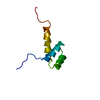

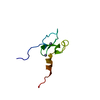
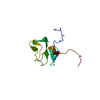
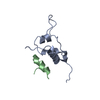
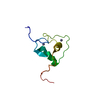

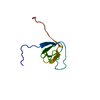
 PDBj
PDBj










 HSQC
HSQC